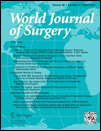Effects of Gastric Bypass and Sleeve Gastrectomy on Bone Mineral Density and Bone Turnover Markers: A Systematic Review and Meta-Analysis
Supplementary Information: The online version contains supplementary material available at https://doi.org/10.1007/s00268-021-06429-1.
Abstract
Background
There is a growing interest in the post-operative bone-related effects of bariatric surgery. However, little is known about the comparative effects of the most commonly performed bariatric procedures, namely Roux-en-Y gastric bypass (RYGB) and sleeve gastrectomy (SG).
Objectives
To systematically assess the differences in areal bone mineral density (aBMD) and biochemical and hormonal markers of bone metabolism among patients undergoing RYGB and SG.
Methods
We conducted a systematic review and meta-analysis of studies aBMD at different sites, as well as bone-specific alkaline phosphatase (BALP), 25-OH-vitamin D, calcium and parathyroid hormone (PTH) after RYGB and SG.
Results
Fourteen studies were included (717 patients, 50.63% in the RYGB arm). Based on data collected at 1 year, 2 years and > 2 years, there were no significant differences in aBMD measurements at the total hip, lumbar spine, femoral neck, and the whole body with no statistical heterogeneity among different comparisons. Patients in the RYGB group showed significantly higher concentrations of BALP at 1 year (SMD = 0.52, 95%CI, 0.23–0.81, p = 0.0004) and PTH at > 2 years of follow-up (SMD = 0.68, 95%CI, 0.31–1.05, p = 0.0003) compared to the SG group.
Conclusion
There were no significant differences in aBMD measurements at the hip, lumbar spine, femoral neck, and the total body following RYGB and SG procedures. However, BALP and PTH concentrations were significantly higher after RYGB surgeries compared to SG. Attention should be paid to patients undergoing RYGB to prevent the expected skeletal fragility over time.




